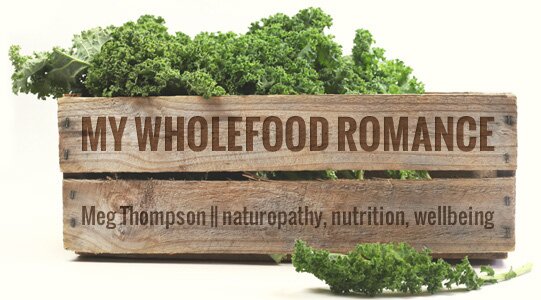My Wholefood Romance Fermentation Series Part 1: FERMENTING VEGETABLES
 Welcome to the wonderful world of FERMENTATION! I’ll be your host, Meg. I’ve been wanting to write about this for a long time, as it is a topic close to my heart – and I have a book coming out soon on fermented beverages!! Fermenting is also a very big topic, so I have decided to break it down into a few episodes. This first foray into fermentation is all about culturing vegetables. It is one of the least intimidating ways to ferment, as you don’t need any special starters or equipment. Just a little patience {insert Guns n’ Roses style whistle….any late 80′s early 90′s music fans out there? Anyone??}.
Welcome to the wonderful world of FERMENTATION! I’ll be your host, Meg. I’ve been wanting to write about this for a long time, as it is a topic close to my heart – and I have a book coming out soon on fermented beverages!! Fermenting is also a very big topic, so I have decided to break it down into a few episodes. This first foray into fermentation is all about culturing vegetables. It is one of the least intimidating ways to ferment, as you don’t need any special starters or equipment. Just a little patience {insert Guns n’ Roses style whistle….any late 80′s early 90′s music fans out there? Anyone??}.
Fermented foods and drinks are magical! Most noted for their positive effects on the digestive system, they work to promote an optimal balance of bacteria in the gut. Healthy gut bacteria is essential to the health of the whole body, and unfortunately many of our dietary and lifestyle habits such as sugar, caffeine, processed foods, toxins and stress are harmful to these precious bacteria. Fermented foods and drinks work to maintain, protect and nourish our intestinal cells, and can also alleviate some common digestive conditions such as IBS, bloating, and reflux to name a few. In addition to their wonderful digestive talents, fermented foods and drinks can improve the function of our immune system, help to regulate our allergic response and reduce susceptibility to allergies, improve detoxification, and can contribute to healthy skin and hair. More on that to come.
The greatest thing about making fermented anything is that they are simple, cheap, delicious and easy to make at home, and they are a lot of fun! Making your own ferments is essentially making your own probiotics.

I say that fermented foods and drinks are magical, because the process …



 Turmeric is a magical spice. From the same family as ginger, this root herb is warming and bitter in nature, but has a lovely mild, woody flavour. The healing properties of turmeric have been greatly researched, and it is used widely by natural therapists, both in liquid, capsule and powder (dietary) form. It has a long tradition in India, where it is used generously and daily in the diet.
Turmeric is a magical spice. From the same family as ginger, this root herb is warming and bitter in nature, but has a lovely mild, woody flavour. The healing properties of turmeric have been greatly researched, and it is used widely by natural therapists, both in liquid, capsule and powder (dietary) form. It has a long tradition in India, where it is used generously and daily in the diet. The great thing about turmeric is that it is fairly easy to get through your diet. You need around one teaspoon daily to have a therapeutic effect, or less for general wellbeing. Apart from adding it to your curries, stews, soups, and rice or grain dishes, turmeric is also great friends with cauliflower, and egg, so feel free to sneak some into your omelettes.
The great thing about turmeric is that it is fairly easy to get through your diet. You need around one teaspoon daily to have a therapeutic effect, or less for general wellbeing. Apart from adding it to your curries, stews, soups, and rice or grain dishes, turmeric is also great friends with cauliflower, and egg, so feel free to sneak some into your omelettes.





















